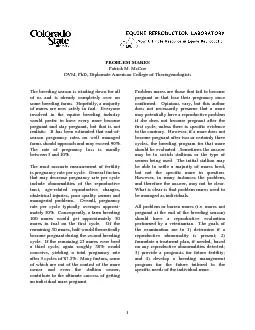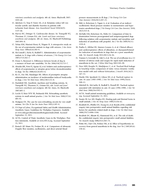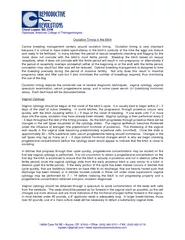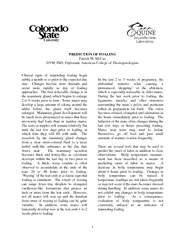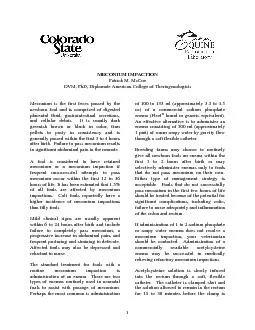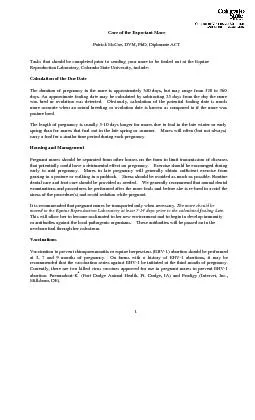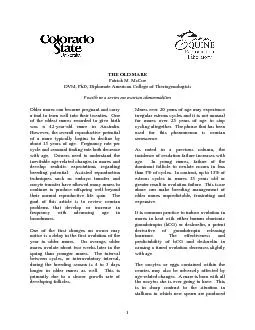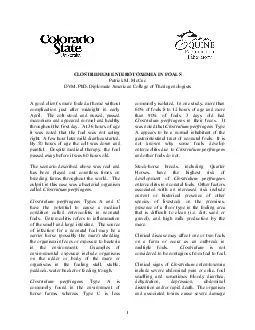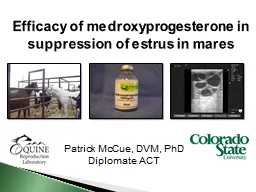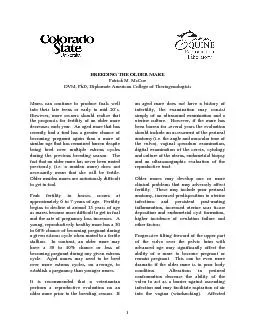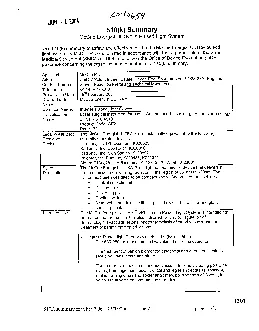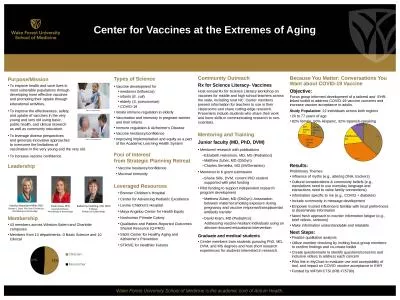PDF-PROBLEM MARES Patrick M. McCue DVM, PhD, Diplomate American The breedi
Author : danika-pritchard | Published Date : 2015-08-31
1 A complete breeding soundness examination usually consists of a thorough breeding and medical history evaluation of the general health of the mare examination
Presentation Embed Code
Download Presentation
Download Presentation The PPT/PDF document "PROBLEM MARES Patrick M. McCue DVM, PhD,..." is the property of its rightful owner. Permission is granted to download and print the materials on this website for personal, non-commercial use only, and to display it on your personal computer provided you do not modify the materials and that you retain all copyright notices contained in the materials. By downloading content from our website, you accept the terms of this agreement.
PROBLEM MARES Patrick M. McCue DVM, PhD, Diplomate American The breedi: Transcript
Download Rules Of Document
"PROBLEM MARES Patrick M. McCue DVM, PhD, Diplomate American The breedi"The content belongs to its owner. You may download and print it for personal use, without modification, and keep all copyright notices. By downloading, you agree to these terms.
Related Documents

